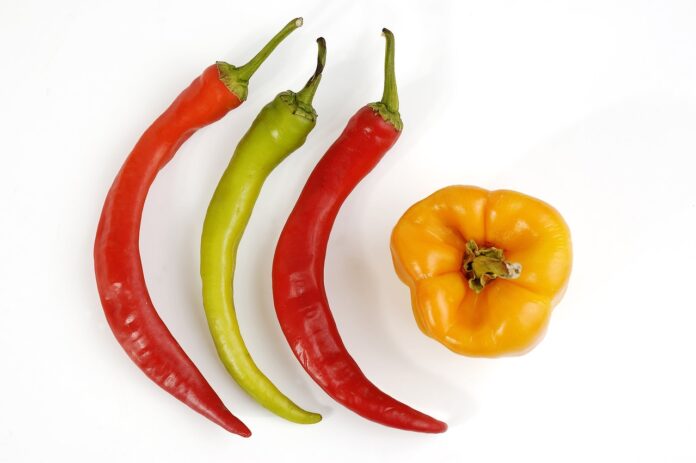There are many varieties of peppers worldwide, and people have long incorporated them into their diets. Some peppers are sweet, while others are fiery hot, but all have their uses, particularly in spicy dishes popular in hot climates. This plant is widely cultivated in various climatic conditions.
Facts About Peppers:
- Doctors once believed that hot varieties like cayenne or chili peppers could cause ulcers. However, later studies showed that these peppers actually kill the bacteria that cause ulcers. Still, it’s best not to overindulge in spicy foods.
- When hot pepper enters the mouth, the brain starts producing endorphins, a natural painkiller. This results in a mild sense of euphoria, which is why many people enjoy spicy food.
- In the wild, hot peppers only grow in tropical climates. They were introduced to Europe after the discovery of new lands by colonizers.
- Pink pepper, which is quite popular in some countries, is actually toxic. It can be eaten but only in small amounts.
- The xylopia tree, which grows in South America, produces hot fruits that taste very similar to chili peppers. Although this 20-meter-tall tree is not a pepper plant, it is still referred to as “Guinea pepper” in regions where it grows.
- Most of the world’s black pepper is produced in Vietnam.
- The black pepper mentioned above originates from India, historically known as the “land of spices.”
- At one time, spices were so expensive that black pepper was traded for gold, kilogram for kilogram.
- Allspice is actually the dried fruit of a tree.
- The oil extracted from some types of pepper plants is used to make soap and even perfumes.
- The spiciness of peppers is measured on a special scale, with “habanero” being the hottest variety.
- The feathers of some bird species can turn red if they eat a lot of cayenne pepper.
- Various types of pepper plants are also used in medicine to produce ointments, patches, and medicinal tinctures.
- Red pepper is easy to grow, even at home, as long as one is willing to care for it.
- The hottest parts of chili peppers are the seeds and the white inner membranes.
- Trying to cool your mouth with water after eating something spicy won’t help much. However, a sip of cold milk can be very effective.
- Due to the extreme spiciness of certain pepper varieties, it’s best not to touch them directly, as they can burn the skin. These peppers are often handled with gloves.
- The word “chili” comes from the Aztec language and means “red.” Chili peppers refer to various types of hot red peppers.
- The first people to cultivate peppers were the indigenous peoples of South America, including the Maya and Aztecs. They grew both hot and sweet varieties.
